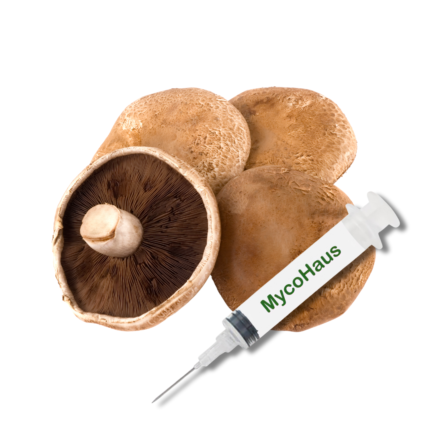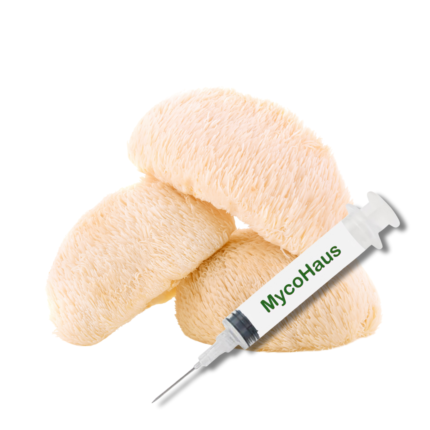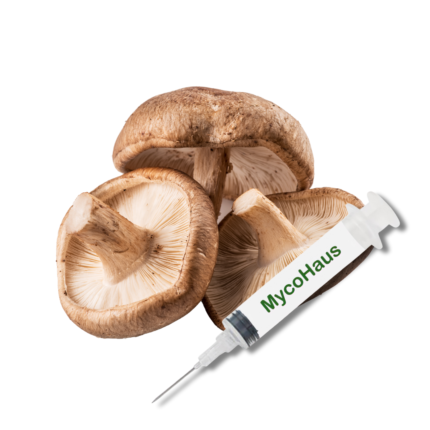Description
Mushroom Liquid Culture
Mushroom Liquid culture provide a more consistent solution than spores for mushroom cultivation in your home garden, as they contain living mycelium that thrives in an optimal growth medium. This makes liquid cultures the superior option.
Work in a clean environment by sterilizing both your hands and the syringe prior to each use. Gently shake the jar to evenly disperse mycelium before inoculating your substrate with it.
The ingredients
Mushroom liquid culture can be an invaluable asset for mushroom growers of all skill levels. It provides greater control of cultivation while decreasing contamination risks, since mycelium has already established in an enclosed, sterile environment. But it’s important to remember that mushroom liquid cultures require additional work when starting from spores or fragments of mycelium.
To successfully make mushroom liquid culture, you will require several essential ingredients. A basic formula consists of water, sugar and nutrients; typically 500 milliliters of non-chlorinated water is combined with 10 grams of either sugar or honey for this. Growers sometimes add additional ingredients during their spawn runs in order to speed mycelial colonization but beware any products which could contaminate it further.
When finished, you’ll transfer it into a jar and sterilize it before use. Glass jars with tight-fitting lids should be used, and prior to any use it’s recommended that they are sterilized with either 10% bleach solution or 70% isopropyl alcohol to eliminate potential sources of contamination.
Once your liquid culture jar is colonized, it can be used to inoculate substrate. Be sure to sterilize both its container, lid, and any tools you might be using; additionally, spores or mycelium can be added directly into the liquid culture to speed up colonization processes.
The jar
Mushroom liquid culture is created by inoculating water and nutrients with mushroom spores or mycelium for faster colonization than traditional methods. The end product of liquid culture is known as living broth culture, which serves as an accelerated starting point for growing mushrooms.
Preparing liquid culture may seem complex for new cultivators. But with proper sterilization and hygiene measures in place, liquid culture can become an effective tool in mushroom cultivation. Any incorrect handling could result in contamination or slow growth; so it is crucial that one adheres strictly to instructions while being mindful of potential hazards.
When working with liquid culture, it’s essential to keep in mind that its health directly ties into the success of mushroom cultivation efforts. Use an uncluttered work area and wash your hands prior to touching any culture; additionally, sterilize any tools such as syringes or jars before working with them.
Once your liquid culture has become completely colonized, you can use it to inoculate substrate. Since colonization takes several weeks to complete, be patient as you monitor its development closely – if signs of discoloration or foul odor appear during this process discard and start again immediately. For optimal results store in the fridge to slow metabolism and extend shelf life.
The mycelium
Mycelium is an essential part of an ecosystem as it recycles nutrients and decomposes organic waste into beneficial compounds for soil food web. Mycelium’s ability to access dead organisms’ nutrient stores allows it to convert them to energy for its own growth; additionally, its enzyme secretions close this energy cycle by decomposing their bodies back to original form – all within its ecosystem!
Mushrooms provide us with an organic alternative to paper, plastic and other harmful materials; Sebastian Cox crafts lampshades from them while Haeckels packages their candles in them and IKEA has even begun using mushrooms as packaging instead of polystyrene!
At this stage, sterilize the liquid culture medium by autoclaving or pressure cooking at 15 psi for about 15 minutes to destroy any bacteria, viruses or contaminants that might impede mycelium’s growth. You may add various nutrients such as honey, corn syrup, malt extract or potato dextrose into your medium for best results.
Once sterilized, pour your solution into a clean jar and mix with a magnetic stir bar or glass marble until all clumps of mycelium have been broken up and distributed evenly. Next use a sterilized syringe to withdraw mycelium suspension from the jar and inject into substrate container – always working under a laminar flow hood or still air box for optimal sterility! After injecting, gently shake the jar to disperse mycelium evenly throughout its entirety!
The substrate
Mushrooms require the right conditions in which to thrive and bloom, such as moist soil with plenty of nutrition. Unfortunately, these same conditions also allow mold growth on their own – potentially polluting their growing substrate before mycelium can take hold and take over its control.
Mushrooms must be grown in an ideal, sterilized environment in order to avoid contamination, which is why most commercial growers utilize liquid cultures containing mycelium, the vegetative portion of fungi, suspended in liquid nutrient media. Once inoculated onto a solid substrate such as grain or sawdust mixes and placed into an ideal growing space.
Mushroom liquid culture recipes that produce optimal results often use dextrose and light malt extract, both of which contain sugars that mycelium feeds on to promote rapid growth. Furthermore, water usage is crucial; too much can lead to bacterial contamination while too little will prevent mycelium colonization.
Before initiating any mushroom liquid culture experiment, it’s essential that all equipment, such as the jar and other tools, be sterilized. This should preferably be accomplished using a pressure cooker with at least 15 PSI pressure. A lid equipped with injection ports and air exchange filter would provide for injection and extraction without risking contaminants entering the jar; additionally agitation via stir plates must also take place for healthy results.











Reviews
There are no reviews yet.